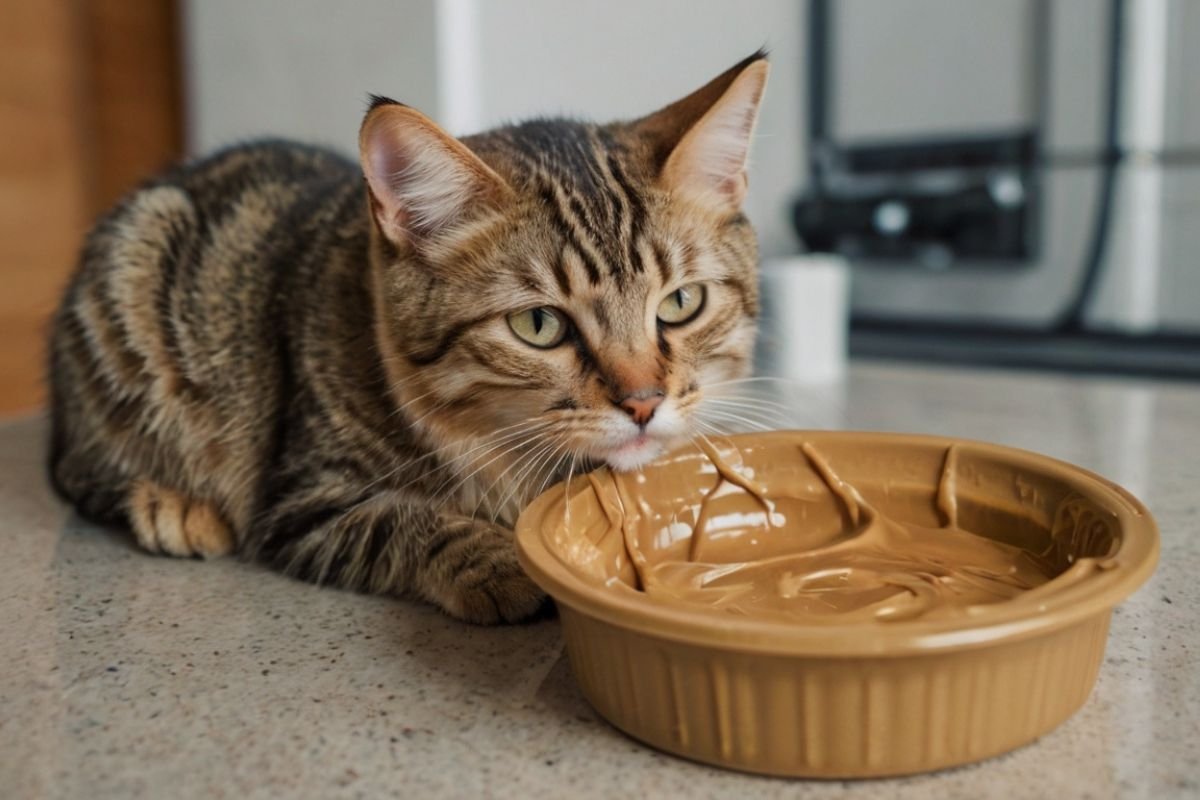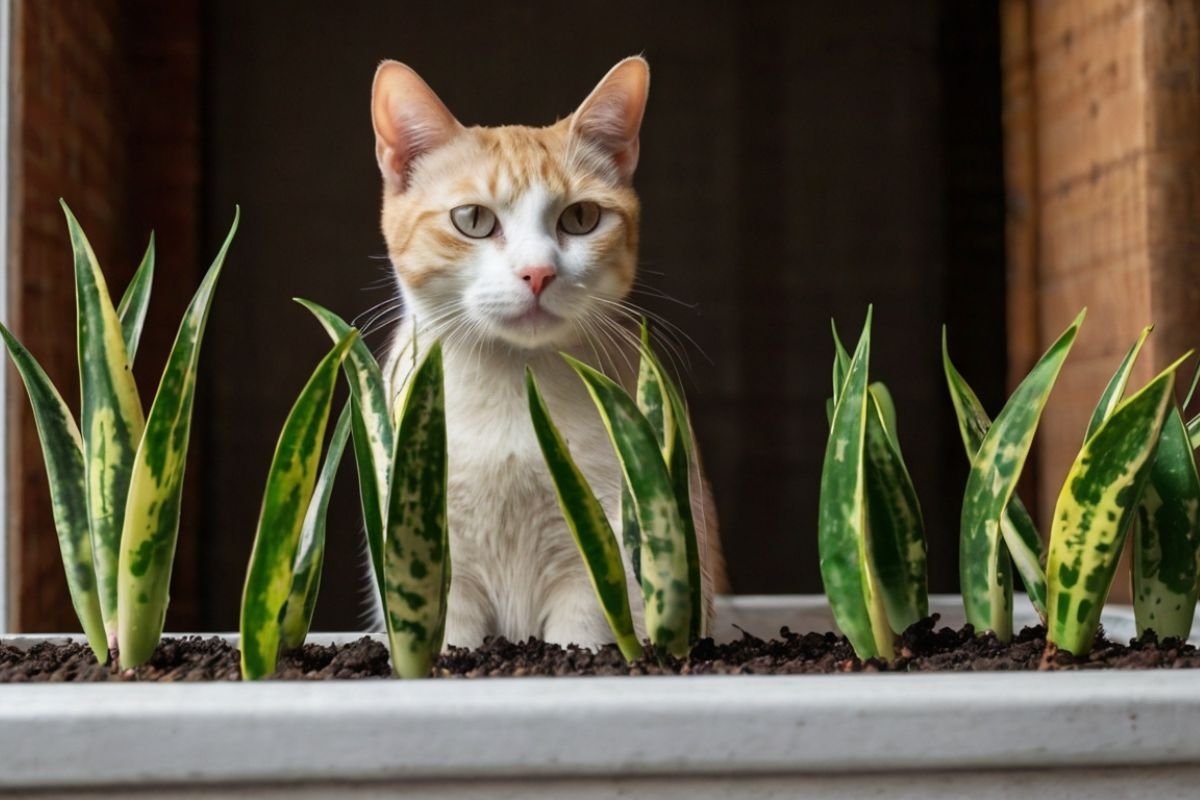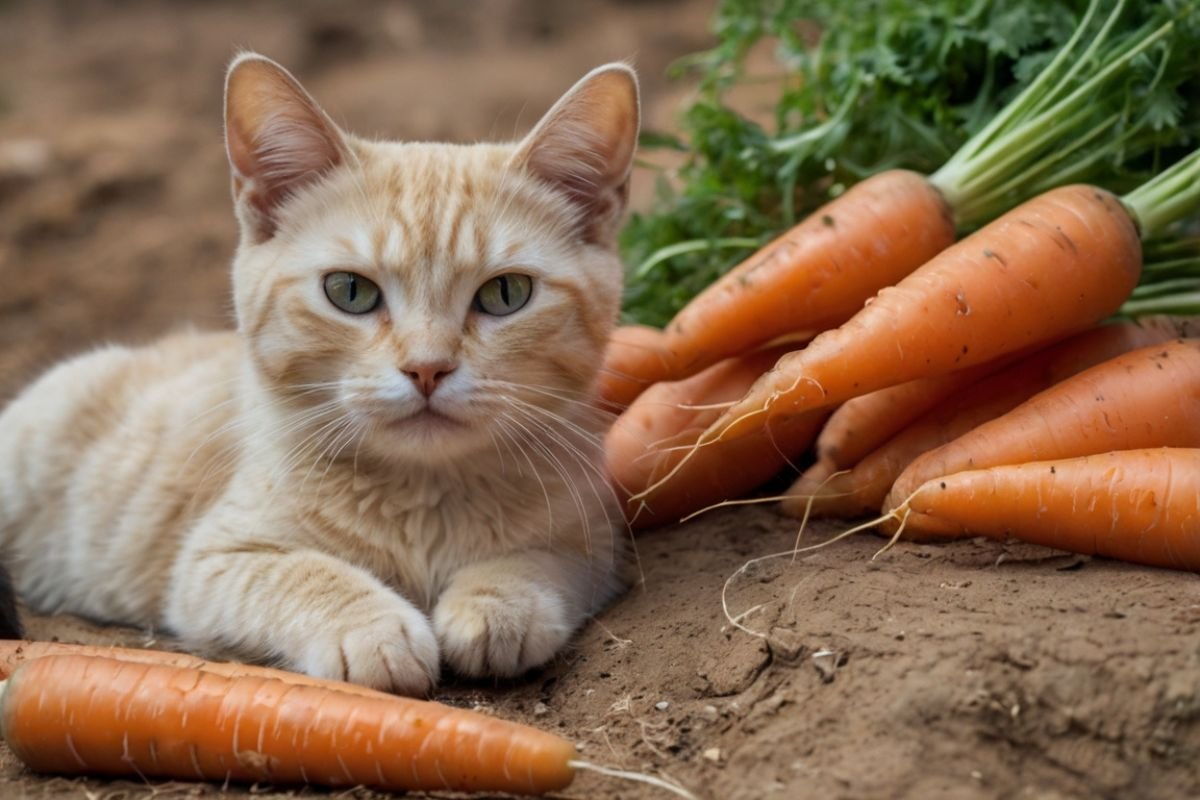I’ll never forget the first time my cat Rio stared at my dinner plate. There I was, trying to eat my “healthy adult meal” of steamed broccoli. Meanwhile, this orange furball sat three feet away, giving me the most judgmental look I’ve ever seen.
You know that look, right? The one that says, “Human, what exactly are you putting in your mouth, and why aren’t you sharing?”
As a cat parent for over five years now, I’ve learned that our feline friends have opinions about everything we eat. They’re curious, persistent, and honestly pretty good at making us feel guilty for not sharing our food.
But here’s the thing – I used to panic every time Rio showed interest in my “human food.” Is it safe? Will it hurt him? Should I Google this at 11 PM like I do with every other cat-related question?
Today, I’m sharing everything I’ve learned about cats and broccoli. Not just the technical stuff, but the real, messy, trial-and-error experiences that come with being a cat parent who wants to do right by their furry family member.
Table of Contents
My Journey Into Cat Nutrition (AKA Learning the Hard Way)
The Day I Realized Cats Are Nothing Like Us
Let me start with a confession. When I first got Rio, I assumed cats were just small, furry humans with different sleep schedules. Boy, was I wrong.
I remember calling my vet in a panic because Rio wouldn’t eat the “healthy” food I bought him. The vet patiently explained that cats are obligate carnivores. They need meat. Period. Not suggestions of meat, not meat-flavored things – actual meat.
This was my first lesson in understanding that what works for us doesn’t always work for our cats. Their bodies evolved over thousands of years to hunt and eat other animals. They need specific nutrients like taurine and arachidonic acid that only come from animal sources.
Where Vegetables Fit In (Spoiler: It’s Complicated)
So where does broccoli fit into this meat-heavy lifestyle? Well, it’s kind of like asking where ice cream fits into a healthy diet. A little bit, occasionally, as a treat – but it’s never going to be the main event.
In the wild, cats might accidentally eat some plant matter when they catch prey. But they’re not out there foraging for salads. They’re not reading nutrition blogs about the benefits of leafy greens.
However, and this is important, tiny amounts of certain vegetables can be okay as treats. My vet told me to keep all treats under 10% of Rio’s daily calories. That’s not much, but it’s enough for the occasional special moment.
The Great Broccoli Experiment: What I Learned
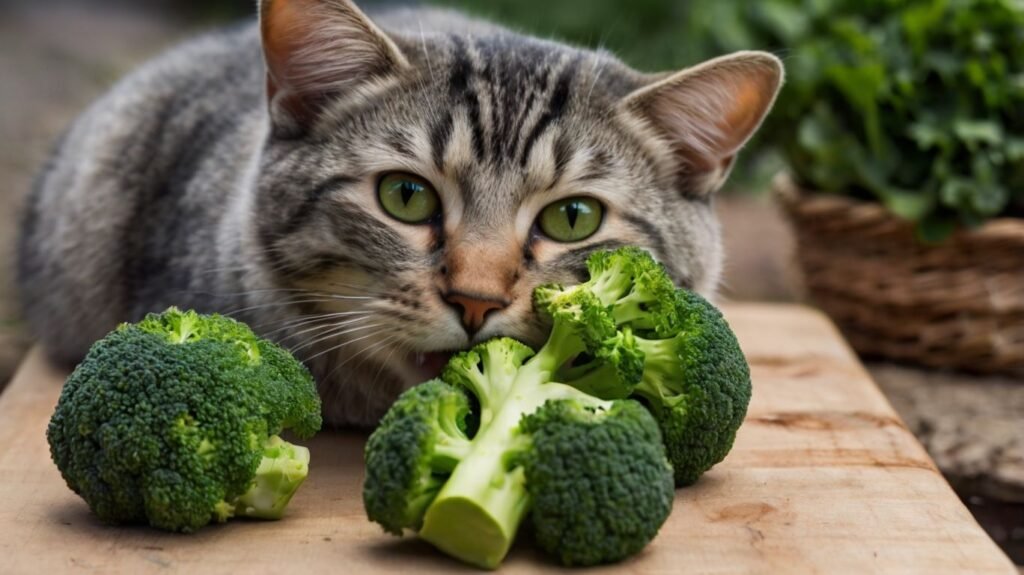
My First Attempt (And Why I Almost Panicked)
The first time I gave Rio broccoli, I made every mistake in the book. I was eating dinner, he was doing his “starving orphan” routine, and I thought, “How bad could a tiny piece be?”
I gave him a chunk straight from my plate. Complete with butter, garlic, and whatever seasonings I’d used. Within an hour, Rio was acting weird. He seemed uncomfortable, kept going to his litter box, and I was convinced I’d poisoned my own cat.
Three frantic Google searches and one expensive emergency vet visit later, I learned that the garlic was the problem. Not the broccoli itself, but all the extras I’d added to make it taste good for humans.
The Right Way (After Multiple Failures)
Now I know better. Plain broccoli – just steamed or boiled with nothing added – is actually safe for cats. The ASPCA doesn’t list it as toxic, and my vet confirmed it’s fine in small amounts.
But here’s what nobody tells you: “small amounts” means really, really small. We’re talking about pieces the size of your pinky nail. Not the generous “small” portions we usually give ourselves.
Also read, Can Cats Eat Squash?
What Broccoli Actually Does for Cats (The Good Stuff)
The Fiber Factor
Rio has always been prone to hairballs. Living with a long-haired orange cat means finding random hair tumbleweeds in corners and occasionally stepping on something unpleasant in the middle of the night.
The tiny bit of extra fiber from occasional broccoli treats has actually helped with this. Not dramatically, but enough that I notice fewer hairball incidents. The fiber helps things move through his system more smoothly.
Broccoli has about 2-3 grams of fiber per 100 grams. For cats, even a minuscule amount can make a difference. It’s like how one extra glass of water can help us feel better – small changes can have real effects.
The Antioxidant Bonus
I’m not going to pretend that broccoli turns cats into superheroes. But it does contain antioxidants like vitamin C and lutein. These help fight cell damage and support eye health.
Rio’s eyes have always been bright and clear, and while I can’t prove it’s the occasional broccoli treat, it certainly doesn’t hurt. Plus, at two years old, he’s at that age where building good habits matters.
Weight Management (The Struggle Is Real)
Let’s be honest – Rio loves food. He’s got that orange cat personality where he acts like every meal might be his last. When he needs a little something extra but I don’t want to add calories, a tiny piece of broccoli works perfectly.
It’s filling enough to satisfy his “I need a snack” demands without adding much to his daily calorie count. For cats who need to lose weight, this can be a game-changer.
The Scary Stuff (What Can Go Wrong)
Gas Attacks That Clear Rooms
Nobody warns you about this part. The first time Rio had a little too much broccoli, our living room became uninhabitable for about an hour. Cats can get gassy from too much fiber, and trust me, it’s not cute.
Now I stick to tiny amounts and space them out. Lesson learned the hard way.
Choking Hazards Are Real
This one still gives me nightmares. Hard broccoli chunks can get stuck in a cat’s throat. They don’t chew like we do, so anything bigger than a pea can become dangerous.
I always cook broccoli until it’s soft and cut it into pieces smaller than Rio’s kibble. It seems overly cautious, but I’d rather be safe than sorry.
The Oxalate Issue
Here’s something I learned from my vet: broccoli contains oxalates, which can interfere with calcium absorption. In large amounts, they might contribute to urinary stones.
For healthy adult cats getting tiny treats occasionally, this isn’t usually a problem. But kittens, senior cats, or cats with kidney issues should avoid broccoli entirely.
Seasoning Disasters
I cannot stress this enough: only plain broccoli is safe. No butter, no salt, no garlic, no onion powder. Nothing that makes it taste good to humans.
I keep a separate portion for Rio whenever I make broccoli for myself. It’s bland and boring, but that’s exactly what he needs.
How Much Is Actually Safe? (Less Than You Think)
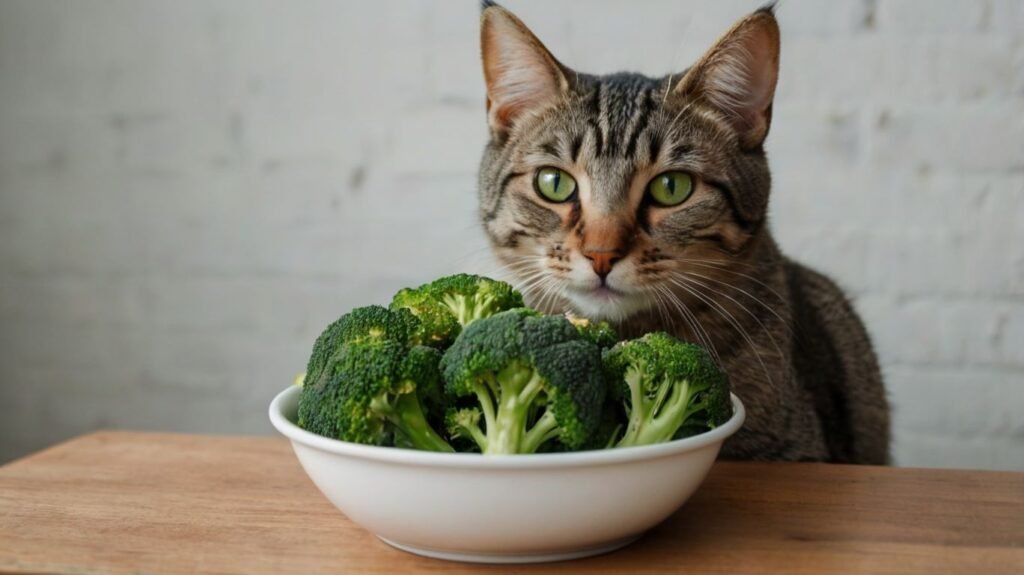
Starting Smaller Than Small
When I first started giving Rio broccoli, I thought a “small piece” meant about the size of a grape. Wrong. Dead wrong.
The right size is more like the tip of your pinky finger. Seriously. For a 12-pound cat, one or two pieces this size, once or twice a week, is plenty.
The 10% Rule in Real Life
My vet explained that treats should never exceed 10% of a cat’s daily calories. Rio eats about 250 calories per day, so that’s 25 calories maximum from treats.
A tiny piece of broccoli has maybe 2-3 calories. So mathematically, I could give him more. But I don’t, because his stomach doesn’t care about math.
Every Cat Is Different
Rio tolerates broccoli well, but my friend’s cat absolutely hates it. Another friend’s cat loves it so much she tries to steal it off the counter.
Pay attention to your own cat’s reactions. Some cats have sensitive stomachs, others are more adventurous. There’s no universal right answer.
My Step-by-Step Process (What Actually Works)
Preparation That Won’t Poison Anyone
Here’s my foolproof method:
- Wash the broccoli thoroughly
- Cut off tiny florets, avoiding thick stems
- Steam or boil until very soft (about 8-10 minutes)
- Let it cool completely
- Cut into pieces smaller than Rio’s kibble
- Store extra portions in the fridge for later
Serving Without Drama
I’ve learned that Rio prefers his broccoli slightly warm, not cold from the fridge. I let it sit out for a few minutes before serving.
Sometimes I hand-feed him one piece at a time. Other times, I mix a tiny amount into his wet food. Both methods work, but he seems to prefer the personal attention of hand-feeding.
The Puree Trick
For cats who are interested but struggle with chunks, pureeing works great. I blend cooked broccoli with a little water and mix a small spoonful into their regular food.
This method also works well for senior cats or cats with dental issues who might have trouble chewing.
Who Should Skip This Entirely
Kittens Are Off-Limits
I learned this the hard way with a foster kitten. Their digestive systems are too delicate for experiments with human food. Stick to kitten food and vet-approved treats until they’re at least a year old.
Cats with Health Issues
Rio is healthy, so broccoli works for him. But cats with kidney disease, urinary problems, or digestive issues should avoid it entirely. The risks outweigh any potential benefits.
When Your Vet Says No
Always check with your vet first, especially if your cat takes medications or has health conditions. They know your cat’s specific situation better than any blog post ever could.
Real Talk: What Other Cat Parents Say
The Success Stories
My neighbor’s cat absolutely loves broccoli. She calls it “kitty candy” and says her cat actually begs for it. Some cats genuinely enjoy the taste and texture.
A friend from my cat parent group uses frozen broccoli puree as summer treats. Her cats love the cold, crunchy texture on hot days.
The Disaster Stories
Then there’s my coworker, whose cat got into a whole bowl of leftover broccoli salad. The aftermath involved a very expensive vet bill and a promise to never leave human food unattended again.
Another friend’s cat loved broccoli but couldn’t handle the gas it caused. They had to stop giving it because it was making everyone miserable.
The “Meh” Responses
Most cats I know are pretty indifferent to broccoli. They’ll try it once, decide it’s not worth their time, and go back to their regular food. This is completely normal and nothing to worry about.
Creative Ways to Share (If Your Cat Is Interested)
The Topper Method
I sometimes puree a tiny amount of broccoli and drizzle it over Rio’s dinner. It adds a little variety without overwhelming his system.
Frozen Summer Treats
During hot weather, I freeze broccoli puree in ice cube trays. Rio gets a small chip as a cooling treat. He loves the temperature contrast.
The Training Reward
For cats who enjoy broccoli, it can work as a training reward. It’s healthier than many commercial treats and just as motivating for food-driven cats.
Watching for Problems (The Paranoid Parent Guide)
Normal vs. Concerning
After giving Rio broccoli, I watch him for the next day or two. Normal reactions include showing interest in the food, maybe some minor changes in bathroom habits, and continuing to act like his usual self.
Concerning signs include vomiting, diarrhea that lasts more than a day, loss of appetite, or seeming uncomfortable. These warrant a call to the vet.
Keeping Track
I keep a simple log of what treats I give Rio and when. It helps me spot patterns and gives my vet useful information if problems arise.
Nothing fancy – just dates and what he ate. But it’s saved me from overthinking normal fluctuations in his behavior.
The Reality of Being a Cat Parent
We All Make Mistakes
I’ve given Rio things I shouldn’t have. I’ve panicked over nothing. I’ve spent way too much money on emergency vet visits for problems that resolved themselves.
This is normal. We’re all learning as we go, and our cats are surprisingly resilient. The key is learning from mistakes and adjusting our approach.
Love Isn’t Always Sharing Food
The hardest lesson I’ve learned is that loving Rio sometimes means not sharing my food with him. Even when he gives me those pathetic “I’m starving” looks.
His health is more important than my desire to include him in every meal. Saying no to those pleading eyes is actually an act of love.
Building Trust Through Consistency
Rio trusts me to make good decisions about his food because I’ve been consistent. I prepare his treats the same way every time, stick to safe portions, and pay attention to his reactions.
This consistency has made him more comfortable trying new things and helped me feel more confident in my decisions.
Looking Forward: Making Smart Choices
It’s Not About Perfect
I’m not a perfect cat parent. I make mistakes, second-guess myself, and probably worry too much. But I’m committed to learning and doing better.
Broccoli isn’t going to make or break Rio’s health. But approaching it thoughtfully and safely is part of being a responsible pet parent.
Your Cat’s Needs Come First
Rio’s preferences and health needs guide my decisions, not my desire to share my favorite foods. Some days he’s interested in trying new things, other days he just wants his regular food.
Both responses are perfectly fine. My job is to offer safe options and respect his choices.
The Joy of Small Moments
When Rio does enjoy a tiny piece of broccoli, it’s a sweet moment of connection. He trusts me enough to try something new, and I get to see his personality shine through his food preferences.
These small interactions build our relationship and help me understand him better. That’s worth more than any nutritional benefit.
Final Thoughts: Trust Your Instincts
After years of navigating the ins and outs of cat parenthood, I’ve learned to trust my instincts while staying informed. Broccoli can be a safe, occasional treat for many cats when prepared correctly.
But every cat is unique. What works for Rio might not work for your cat. What matters is paying attention, starting small, and always prioritizing your cat’s health and happiness.
The next time you’re eating broccoli and feel those curious eyes watching, you’ll know what to do. Whether that’s sharing a tiny, plain piece or simply giving them extra pets instead, you’re making the choice that’s right for your feline family member.
And honestly? That’s what being a cat parent is all about – making thoughtful decisions with love, learning from our mistakes, and always putting our cats’ wellbeing first. Even when they give us those guilt-inducing stares that suggest we’re the worst cat parents in the world.
Trust me, we’re all doing better than we think we are.

Shahriar Robin is the creator of WhatPetsCanEat.com, a passionate pet lover and dedicated cat dad to Rio, a curious two-year-old orange feline who inspired this website. With a love for animals and a knack for research, Shahriar shares trusted, easy-to-understand information to help fellow pet owners make safe, healthy food choices for their furry friends.
